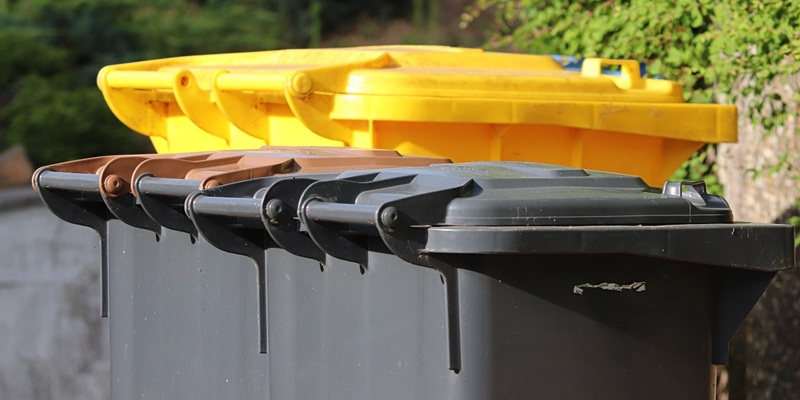Waste-to-Energy Technologies in Modern Waste Management

As the global population grows and industrial activities intensify, the amount of waste generated has reached alarming levels. In response, cleantech innovations have emerged to address not only the challenge of waste management but also the pressing need for sustainable energy solutions. One of the most promising developments in this space is waste-to-energy (WTE) technologies. These solutions represent a powerful intersection between environmental responsibility and energy efficiency.
Understanding the Core Concept of Waste-to-Energy Technologies
Before diving into the various technologies and their benefits, it is crucial to understand the fundamental concept behind WTE. Waste-to-energy refers to the process of converting non-recyclable waste materials into usable forms of energy, typically in the form of electricity, heat, or fuel. This conversion is achieved through a variety of processes, such as thermal, biological, and chemical methods.
Significantly, WTE solutions align with the principles of a circular economy. Rather than letting waste pile up in landfills or oceans, these technologies extract energy and reduce environmental degradation. In addition to lowering greenhouse gas emissions, they also decrease our dependence on fossil fuels.
Types of Waste-to-Energy Technologies and How They Work
There is no one-size-fits-all approach when it comes to WTE. Different types of technologies have been developed to address different forms of waste and energy requirements. Below are the primary categories and how they function.
Incineration: The Most Common Thermal Process
Incineration involves burning municipal solid waste (MSW) at extremely high temperatures. This process significantly reduces the volume of waste while generating steam, which is then converted into electricity through turbines. Although incineration is widely used due to its efficiency, it has faced criticism over emissions. However, with the integration of advanced flue gas cleaning systems, modern incineration plants have become far cleaner and more efficient.
Gasification: Cleaner and More Versatile
Gasification is a more refined thermal technology that converts organic waste into syngas, a mixture of carbon monoxide, hydrogen, and methane. The syngas can then be used to generate electricity or serve as a base for producing biofuels and other chemicals. Unlike incineration, gasification operates in a low-oxygen environment, resulting in fewer pollutants and greater energy conversion efficiency.
Pyrolysis: Breaking Down Waste Without Oxygen
Closely related to gasification, pyrolysis involves heating waste in the absence of oxygen. This technique breaks down complex organic materials into simpler compounds, producing bio-oil, syngas, and biochar. These outputs can be used in various industrial applications, making pyrolysis a flexible and sustainable option.
Anaerobic Digestion: A Biological Approach
In contrast to thermal processes, anaerobic digestion uses microorganisms to break down organic waste—such as food scraps and agricultural residues—in the absence of oxygen. The result is biogas, primarily composed of methane and carbon dioxide, which can be used as a renewable energy source. Furthermore, the residual digestate serves as a nutrient-rich fertilizer, supporting sustainable agriculture.
Plasma Arc Gasification: The Cutting Edge of Cleantech
Although still relatively new, plasma arc gasification is gaining attention for its ability to handle even the most toxic and hazardous waste. By generating a plasma torch that operates at temperatures over 5,000°C, this process disintegrates waste into its elemental components. The output is a clean syngas and an inert vitrified slag that can be safely disposed of or used in construction.
Environmental and Economic Benefits of Waste-to-Energy Systems
Transitioning to WTE technologies offers numerous advantages for both the environment and the economy. These systems do more than just generate power—they contribute to a larger vision of sustainable development.
Reduced Landfill Dependency
One of the most immediate benefits of WTE is the significant reduction in the volume of waste sent to landfills. This helps preserve land space, reduces groundwater contamination, and minimizes methane emissions—a potent greenhouse gas commonly released from decomposing landfill waste.
Generation of Renewable Energy
By converting waste into usable energy, WTE technologies provide a renewable and stable energy source. Unlike wind or solar power, waste is consistently available, making WTE a reliable contributor to the energy grid.
Lower Greenhouse Gas Emissions
Though some WTE processes involve combustion, modern systems are designed to minimize emissions. More importantly, WTE reduces the need for fossil fuels, resulting in an overall reduction in carbon dioxide and other harmful gases.
Job Creation and Economic Growth
From construction to operation and maintenance, WTE facilities generate employment opportunities. Moreover, they stimulate local economies by offering alternative energy sources and reducing the costs associated with waste management and fossil fuel dependency.
Challenges Facing the Waste-to-Energy Sector
Despite its numerous benefits, the WTE industry faces several hurdles. Addressing these challenges is critical to unlocking the full potential of these technologies.
High Capital Costs
Building and maintaining WTE plants requires significant investment. Although the long-term returns are promising, the initial financial burden can be a barrier for many municipalities and developing nations.
Public Perception and Acceptance
Public resistance often arises due to misconceptions about air pollution and safety. Therefore, it is essential for policymakers and industry stakeholders to engage in transparent communication and community involvement.
Regulatory and Policy Barriers
In some regions, outdated regulations and unclear policy frameworks hinder the deployment of WTE solutions. For waste-to-energy technologies to flourish, there needs to be a supportive legal and financial ecosystem.
Global Trends and Future Outlook for Waste-to-Energy Technologies
The global WTE market is growing rapidly, driven by urbanization, stricter environmental regulations, and the need for sustainable energy sources. Countries like Sweden, Japan, and Germany have already integrated WTE into their national waste management strategies with remarkable success. In contrast, developing countries are now exploring these technologies as part of their transition to green economies.
Embracing Innovation and Integration
Looking ahead, the focus is shifting toward hybrid systems that integrate WTE with other cleantech innovations, such as carbon capture and smart grid technology. Additionally, advances in artificial intelligence and machine learning are being utilized to optimize plant operations and energy outputs.
Supporting Circular Economies
Waste-to-energy technologies are increasingly being viewed not just as disposal methods but as integral parts of the circular economy. By recovering energy and materials from waste, these systems contribute to resource efficiency and sustainable consumption.
Final Thoughts
The potential of waste-to-energy technologies in cleantech is undeniable. As environmental concerns and energy demands continue to grow, WTE offers a dual solution: effective waste management and renewable energy generation. While challenges remain, the benefits—ranging from environmental sustainability to economic growth—are compelling reasons to invest in and adopt these technologies.
Consequently, governments, industries, and communities must work together to support innovation, implement favorable policies, and educate the public. Only through collective action can we harness the full promise of waste-to-energy systems and move toward a more sustainable and resilient future.

Source: Waste-to-Energy Technologies in Modern Waste Management




